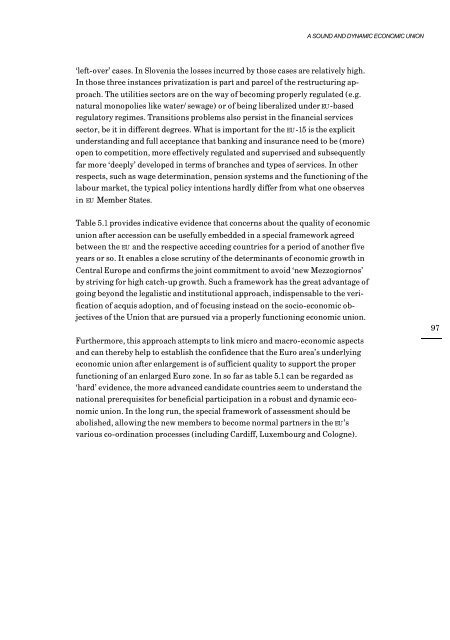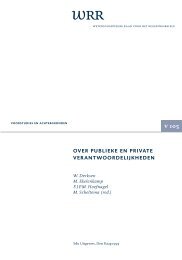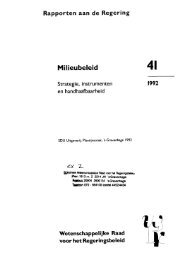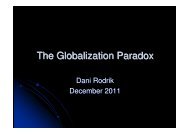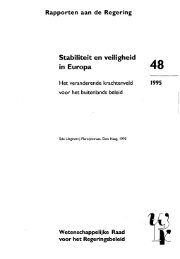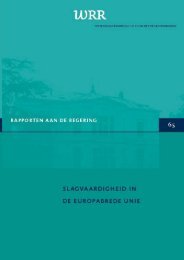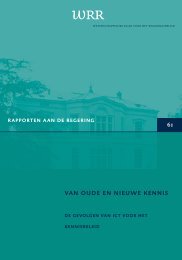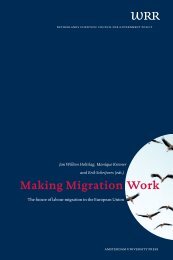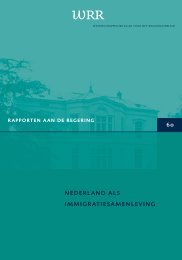w 109 long-run economic aspects of the european union's eastern ...
w 109 long-run economic aspects of the european union's eastern ...
w 109 long-run economic aspects of the european union's eastern ...
Create successful ePaper yourself
Turn your PDF publications into a flip-book with our unique Google optimized e-Paper software.
A SOUND AND DYNAMIC ECONOMIC UNION‘left-over’ cases. In Slovenia <strong>the</strong> losses incurred by those cases are relatively high.In those three instances privatization is part and parcel <strong>of</strong> <strong>the</strong> restructuring approach.The utilities sectors are on <strong>the</strong> way <strong>of</strong> becoming properly regulated (e.g.natural monopolies like water/sewage) or <strong>of</strong> being liberalized under EU -basedregulatory regimes. Transitions problems also persist in <strong>the</strong> financial servicessector, be it in different degrees. What is important for <strong>the</strong> EU -15 is <strong>the</strong> explicitunderstanding and full acceptance that banking and insurance need to be (more)open to competition, more effectively regulated and supervised and subsequentlyfar more ‘deeply’ developed in terms <strong>of</strong> branches and types <strong>of</strong> services. In o<strong>the</strong>rrespects, such as wage determination, pension systems and <strong>the</strong> functioning <strong>of</strong> <strong>the</strong>labour market, <strong>the</strong> typical policy intentions hardly differ from what one observesin EU Member States.Table 5.1 provides indicative evidence that concerns about <strong>the</strong> quality <strong>of</strong> <strong>economic</strong>union after accession can be usefully embedded in a special framework agreedbetween <strong>the</strong> EU and <strong>the</strong> respective acceding countries for a period <strong>of</strong> ano<strong>the</strong>r fiveyears or so. It enables a close scrutiny <strong>of</strong> <strong>the</strong> determinants <strong>of</strong> <strong>economic</strong> growth inCentral Europe and confirms <strong>the</strong> joint commitment to avoid ‘new Mezzogiornos’by striving for high catch-up growth. Such a framework has <strong>the</strong> great advantage <strong>of</strong>going beyond <strong>the</strong> legalistic and institutional approach, indispensable to <strong>the</strong> verification<strong>of</strong> acquis adoption, and <strong>of</strong> focusing instead on <strong>the</strong> socio-<strong>economic</strong> objectives<strong>of</strong> <strong>the</strong> Union that are pursued via a properly functioning <strong>economic</strong> union.Fur<strong>the</strong>rmore, this approach attempts to link micro and macro-<strong>economic</strong> <strong>aspects</strong>and can <strong>the</strong>reby help to establish <strong>the</strong> confidence that <strong>the</strong> Euro area’s underlying<strong>economic</strong> union after enlargement is <strong>of</strong> sufficient quality to support <strong>the</strong> properfunctioning <strong>of</strong> an enlarged Euro zone. In so far as table 5.1 can be regarded as‘hard’ evidence, <strong>the</strong> more advanced candidate countries seem to understand <strong>the</strong>national prerequisites for beneficial participation in a robust and dynamic <strong>economic</strong>union. In <strong>the</strong> <strong>long</strong> <strong>run</strong>, <strong>the</strong> special framework <strong>of</strong> assessment should beabolished, allowing <strong>the</strong> new members to become normal partners in <strong>the</strong> EU ’svarious co-ordination processes (including Cardiff, Luxembourg and Cologne).97


